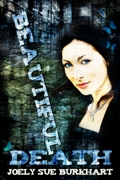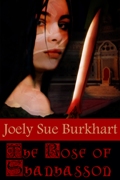
The cultures in this series are based on Ancient Macedonia, Thrace, Greece, and Rome, mixed with a healthy dose of both mythology and technology, and then warped just a little by yours truly. This page contains all the historical facts, legends, and myths that I used to create this world.
Post-Apocalyptic New Olympia
After a pandemic outbreak decimated the visiting aliens and spread to the human population, New Olympia rose from the chaos as a gleaming haven of technology and science. The City-States are: Argos, Athens, Calydon, Corinth, Delphi, Mycenae, Olympus, Sparta, and Thebes. Of course, MedCorp, the founding medical research corporation, is housed in Olympus. These City-States are the brightest and the best, proudly dedicated to the golden age of Earth’s ancient civilization. Upon acceptance of application (which included thorough medical and financial screening) to enter New Olympia, Citizens chose appropriate new Greek names to signify their commitment to the new world.
Each City has a biodome to protect its Citizens from the mutating virus. Beneath the biodome, circular skyways connect residential towers, shopping areas, entertainment facilities, and of course, the local MedCorp offices. Each City is connected to the others by the Odyssey, the super-fast sleek trains that whisk from City to City in a matter of minutes.
The Pantheon Council rules New Olympia in name only. Each City sits a member on the Council, but as president of the Council and CEO of MedCorp, Zeus is the ultimate authority in New Olympia. Rarely seen outside Olympus, he communicates his orders to the Council via Oracle, the super-computer powering the Cities’ technologies.
Marshals keep the peace in the Cities, but their main duty is extermination. Anyone infected with the mutating virus is called a contaminant and is terminated on sight. Only in recent days have the gates of New Olympia been opened to the Outside world, but few monsters have made an appearance. That might have something to do with the outstanding termination order still in place…
Argos and Delphi were exiled in recent years, and their Councilors, Hera and Apollo respectively, were also kicked off the Pantheon. No one knows why, exactly, although some disagreement with Zeus was obviously the culprit. Since the Odyssey no longer connects them to the rest of the City-States, Argos and Delphi are known as the “Lost Cities.”
Macedon and Thrace
Loosely based on ancient Macedonia and Thrace, these two planets have been at war for centuries. Only in the last ten Macedonian years has a ragged treaty been accepted between the two species. The Macedonians are known as skyrs (Greek for lords), or as Masters on Earth, and are both vampiric, feeding on lifeforce energy, and noctural. The Earth’s sun is so powerful and damaging to their delicate skin that they can actually burst into flame. Their leader, the Megaskyr, (great lord) rules from the capital of Vergina. (Ironic, isn’t it, that their Megaskyr is known as the Sun of Vergina?)
Vergina is a lush jungle of massive choka trees, the largest of which the Megaskyr molds into the Sun Palace. The greater the Megaskyr’s power, the greater the Palace must be as a symbol to the other Houses of the land. It takes constant power to sculpt the tree and power the palace, so only the strongest skyr dare attempt to rule.
To increase their power, skyrs form bonds with weaker skyrs and call them sarissas (a famous Macedonian spear). Always of the opposite sex, a sarissa compounds the controlling skyr’s power. However, this joining can be a deadly mating of powers when two equally matched skyrs fight for dominance. A spear can turn and skewer the hand attempting to wield it. The current Megaskyr, Kleopatra, took the Sun Throne of Macedon with five sarissas. However, all of them were killed in the war of succession, and only Xerxes still lives.
There are sixteen Houses of Macedon, based on the Vergina Sun which is also a symbol of the Megaskyr’s power. The most powerful House is likely Aegae (Philip’s house), but the current Megaskyr’s House is Attalus.
History tidbits: the historical Kleopatra was from Macedonia, but she had a brother named Attalus who mouthed off in front of Prince Alexander (insulting him and his mother, the Queen) and almost caused a war. So appropriately, Attalus became Kleopatra’s original House. Aegae was the ancient capital of Macedonia, and the site of Philip’s assassination.
Other Houses of Macedon include: Persia, Larissa, Rhodes, Pydna, Caria, Molossis, Illyria, Chios, Phocis, Strymon, Thessaly, Olynthus, Methone, and Pherae, all ancient cities of (or regions defeated by) Macedonia except Persia, which is a big cheat (see Xerxes below), and Strymon, which is actually a river.
Characters
Isabella Thanatos: As the First Marshal of Athens, she’s called Beautiful Death. She’s the most famous Marshal in all of New Olympia with nearly one thousand kills in her effort to keep Athens safe. She’s obviously based on Thanatos, the Greek god of Death.
Hades: An alien from Macedon, his name before he was exiled to Earth was Philip of House Aegae. Hades is loosely based on Philip II of Macedonia, the father of Alexander the Great. Why did he choose Hades, Lord of the Underworld, as his New Olympian name? Not for whiny Persephone, oh no. He wants to be Death’s Master. Of course, he named his ship Erebus and the village of contaminants and exiles who came to him for protection is named Asphodel.
Zeus: The great enigma of New Olympia, he’s a renowned hematologist who single-handedly developed the initial vaccines to counteract the pandemic. As the founding father of New Olympia, he obviously has a bit of a god complex.
Charon: Definitely not an old man in a loin cloth as this reference implies, he’s an alien from Thrace, Hades’ Enforcer, a shapeshifter known as a drakon. Although drakon means dragon in ancient Greek, he doesn’t resemble any of our Earth dragons, not with his feathered wings. He mirrors the ferryman mythology as Isabella’s guide to the Underworld. Her gift of books to him in payment mirrors the Sybillean Leaves.
Herakles: (Perhaps better known as Hercules) He’s a Marshal of Athens and Isabella’s second in command. Atalanta and Jason (from the Argonauts legend) are also members of Isabella’s squad.
Icarus: Isabella’s best friend, he owns an exclusive clothing shop On Death’s Wings in Athens and designs fabulous clothes that helped cement Isabella’s formidable reputation in the City. As his and the shop’s names imply, Icarus has a bit of an obsession with wings, specifically Butterfly wings.
Kleopatra: The Megaskyr of Macedon, she exiled Philip to Earth when he was too powerful for her to leash as sarissa. She’s loosely based on Philip II’s wife, not to be confused with Cleopatra of Egypt. Here’s an interesting link about Philip’s tomb that gave me the idea to spell her name with a K.
Xerxes: Yes, Xerxes was from Persia, not Macedonia, but I couldn’t resist. His name is too cool, and he was a great historical figure of the general time period (about 100 years earlier). Although Persia was defeated by Macedonia, it was under Alexander the Great, rather than Philip, who was assassinated before the war. Xerxes’ Macedon House is Persia. In Beautiful Death, we learn that Xerxes is the Megaskyr’s last surviving sarissa.
Apollo: Delphi’s Councilor now exiled from New Olympia, he was one of Zeus’s closest and most instrumental researchers at MedCorp. Now, Apollo has dedicated himself and his City to preserving the great artifacts of our world before they’re utterly lost.
Sybil: Apollo’s daughter, she’s loosely based on the Sybil or oracle, and serves to indirectly begin Isabella’s inner transformation. She loves antique books and risks running into the formidable First Marshal of Athens to retrieve some for her collection.
Hera: Argos’s Councilor now exiled from New Olympia, she continues to tamper with forbidden research. Specifically, she wants to create the perfect monster.
The Erinyes: Also known as the Furies in mythology, the Erinyes are not all female as in legend, nor do they reside in the Underworld, but they are punishers. These are Zeus’s elite executioners, sent only when all other means of termination have failed…or when a Marshal has been infected. Emotionless, efficient, and acting as one unit without words, the Erinyes are feared throughout all New Olympia.
The Keres: Sometimes called Demons of Death, they are Hera’s latest creation. They feed on fear, pain, and suffering. Mythological reference.


